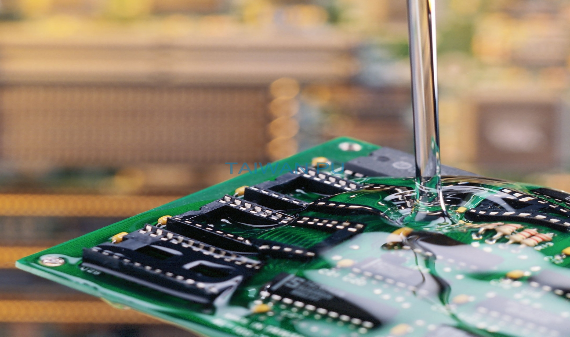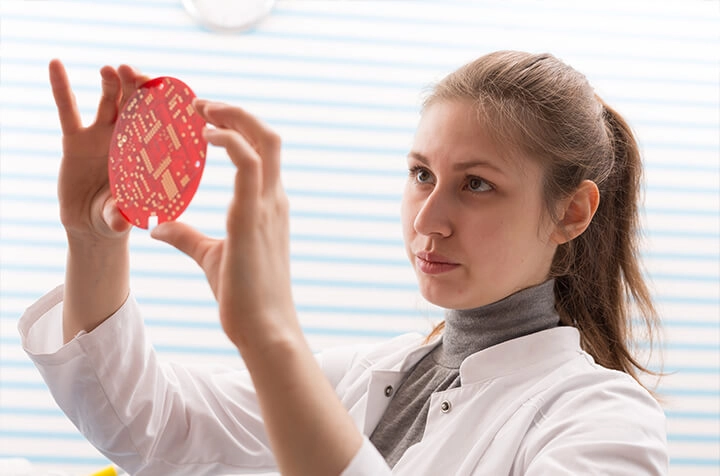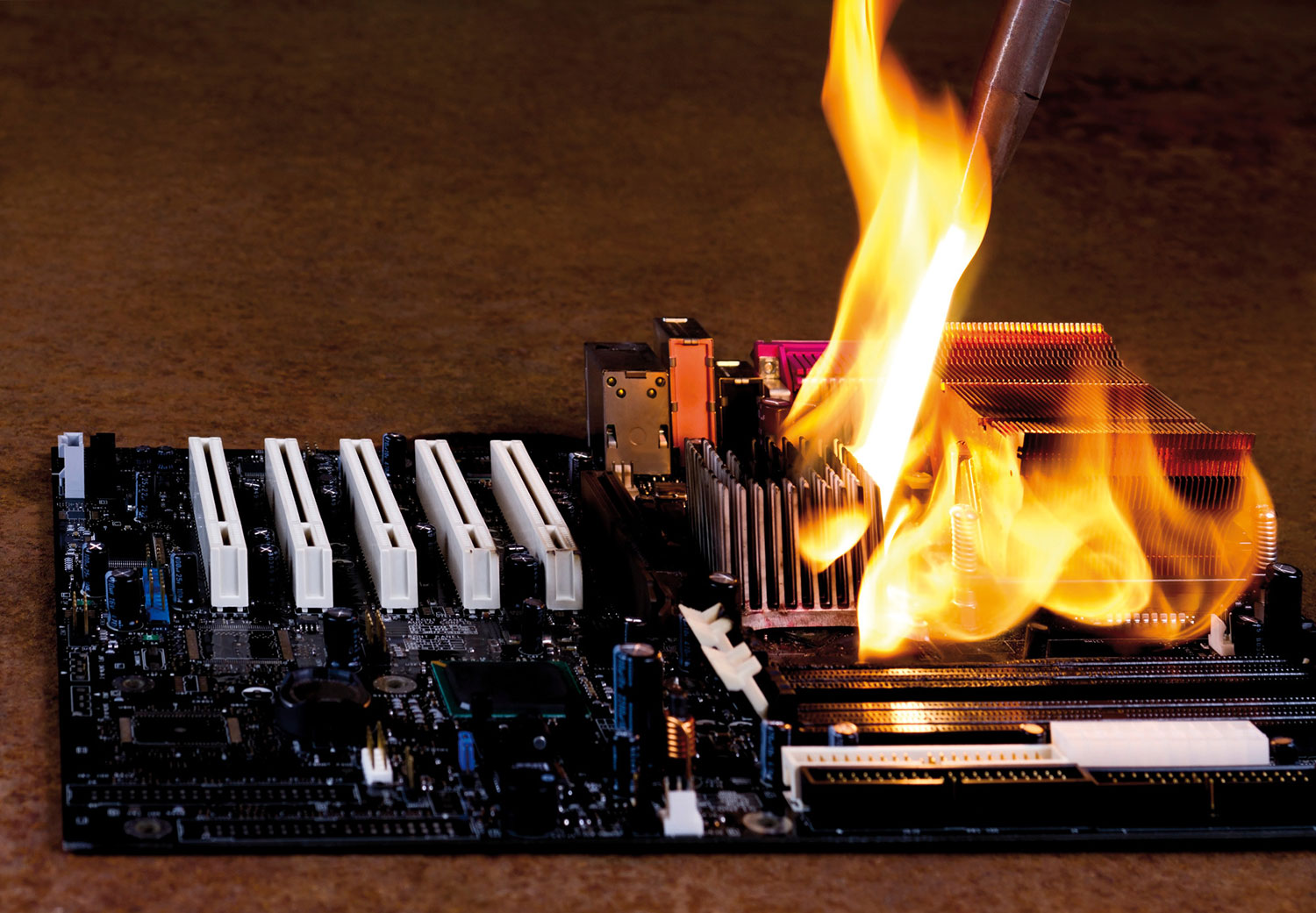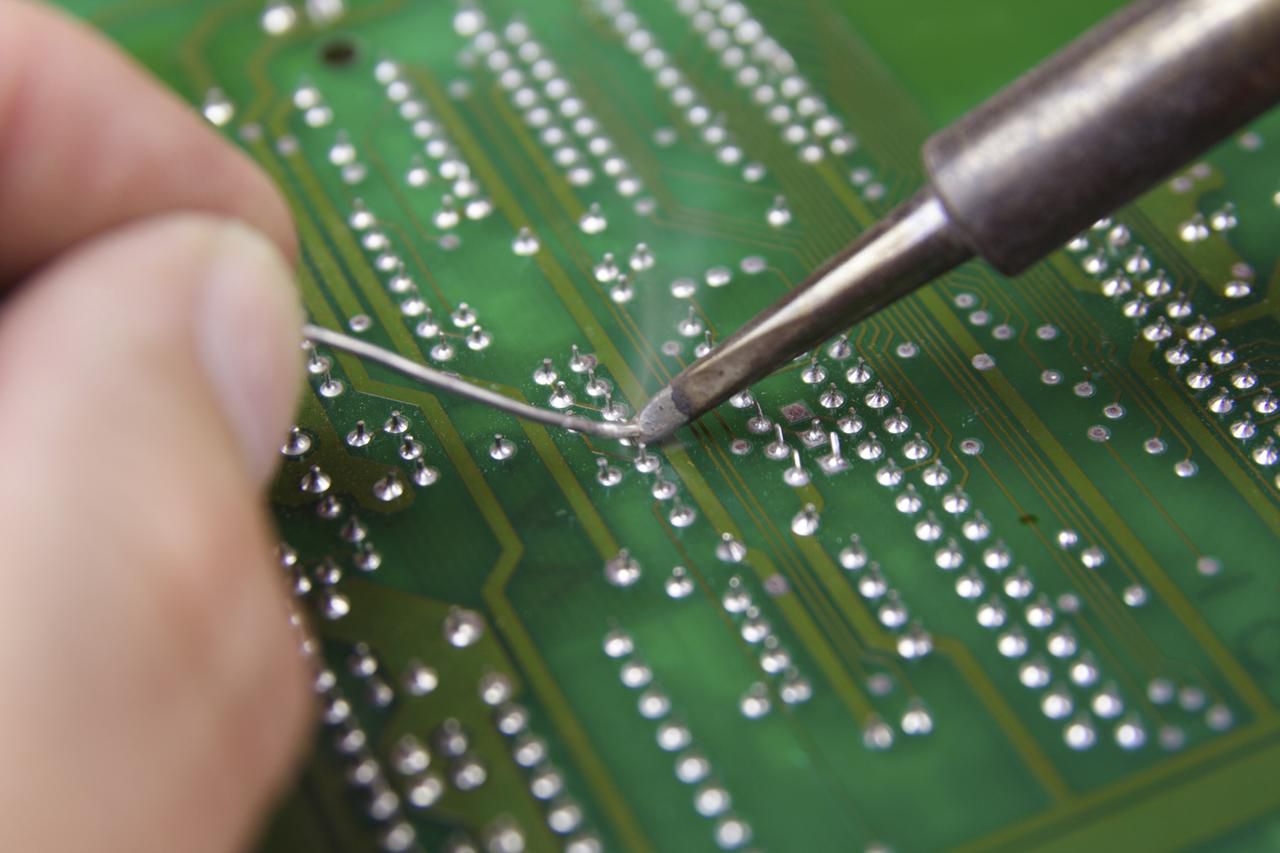
Support Team
Feedback:
support@nextpcb.comWaterproof PCBs are printed circuit boards with a protective coating that makes them resistant to moisture and other environmental elements. The coating is typically a resin-based material that coats the entire board and its components, providing a barrier to water, dust, and other contaminants. This waterproofing technology can be applied to both rigid and flexible circuit boards, providing greater protection for sensitive electronics and components. Waterproof PCBs are often used for critical components in medical, military, and aerospace applications, as well as in consumer electronics and industrial applications.

Waterproof PCBs are essential for any electronic device that is exposed to water or moisture. There are several ways to waterproof a PCB, including using water-resistant PCB substrates, applying waterproof material on the top-most layer, sealing connectors, and applying waterproof paint. Each of these methods is suitable for different types of PCBs, based on their application, and the level of waterproofing required. It is a rule of thumb to isolate electronic items from moisture and water in all conditions. However, to use electronic circuit boards in particular places where the water content in the air is relatively higher, it is preferable to use waterproof PCBs. The PCBs used in marine applications experience very high moisture during their life spans. Hence, the standard PCBs failed there as they absorbed the water.
So, now we have a basic understanding of why we need waterproof PCBs. And how they are different from the conventional PCBs. Let's learn about how to waterproof a PCB.
A PCB substrate is a dielectric material that separates two copper or a copper and a prepreg layer in the printed circuit board. That is the primary function of a substrate. However, it also provides strength, structure and other essential features to the circuit board. There is a long list of PCB substrates available to select depending on the nature of the work that a PCB has to serve. In the case of waterproof PCBs where water resistance is highly required, a moisture-resistant material like FR-4 may do the best. Because the water absorption of FR-4 material is only 0.10% when immersed in water for more than 24 hours.
Other PCB materials, except FR-4, like FR-1, PTEF and Ceramic, are also good options for waterproof PCBs as their water absorption is impressively low. On one side, where FR-1 is only considerable for single or a double-layer PCB, PTEF is a high-frequency material that works well for high-speed and high-frequency circuit boards.
Utilizing these water-resistant substrates will waterproof your PCB from the inside, which will help avoid moisture absorption and PCB swelling.

It is a method of applying a thin layer of a high-density material like parylene C, parylene N or any other waterproofing material on the outer layer of the PCB. The current PCB industry widely uses high-density polymers like parylene N or parylene C to waterproof the PCBs. These are liquid materials applied in vapour form and get solidified after their thin application on the circuit board. The recommended thickness of parylene is 0.05mm, which is relatively thinner than the traditional varnish. This type of waterproofing is only seen in heavy-duty and especial purpose electronic boards. Such as the ones used in ships, submarines, or military devices.

The connectors may provide a way for water to diffuse in the circuit board. And they are also directly in contact with the wires and other components. Hence, sealing them up with a waterproof material may get the job done. This method of waterproofing the PCB is great for the circuit boards that do not serve anywhere near marine but still somewhere the humidity is high. Because the waterproofing in this method is not up to the mark, the water may diffuse in the circuit board through tracks and pads etc.
If you realize after the PCB manufacturing that you need a waterproof PCB or you want to waterproof your DIE printed circuit board, you can use waterproof paint to do so. The waterproof paint is easy to apply and provides an extra layer of security to the board.
This method of waterproofing PCB is of high quality and cheap at the same time. However, take care of paint quality, as many waterproofing paints are available in the market, but not all are high-quality and reliable.

There are three methods of applying waterproofing paint to the printed circuit board, dispensing, manual and dipping. The manual application of the paint provides the highest accuracy. Hence, it is recommended.
It is the most common way to apply paint on a printed circuit board. In this process, the manufacturer uses a spray gun to paint the circuit board equally.
Where dispensing is a fast process, the manual spray provides higher accuracy. The process is quite similar to dispensing, but it has a prior edge in that by using this method, you can waterproof the PCB without any special machine. This method of application covers all those areas that dispersing can not. In most cases, the manual application method is better to go with as it allows higher accuracy and smoother surface than the dispersing method.
Dipping is the simplest way to apply waterproof paint to the PCB. In this method, the PCB is dipped in the paint tank to coat. This method sounds perfect. However, it is not recommended to use as usually the paint sticks at most areas of the circuit board, but some surfaces of the PCB did not get the proper coating. Hence, to avoid uneven paint coating, it is preferred not to use this application method.
We have two most common methods of waterproofing. They include Conformal Waterproof Coating and Waterproofing Enclosures.
The conformal waterproof coating is the most result-driven process and is quite popular among PCB manufacturers and electronic device producers. This process involves the spraying of liquid compounds like epoxy, urethane, silicon etc. On the board to make it waterproof. The conformal coating is also useful in resisting dust and corrosion.
Despite several advantages, the conformal coating has some demerits too. It fails under certain circumstances. The two main reasons are:
Low adhesion: Due to its low adhesion, the conformal waterproof coating is not eligible enough to prevent 100% water diffusing in the circuit board.
Get Easily Damaged: If somehow it prevents water from entering the circuit board. It gets damaged in highly humid and corrosive areas.

The waterproof enclosures are simple boxes made up of plastic, silicon, steel and stainless steel. These boxes covered the PCBs and isolated them from the surrounding environment. The conformal coating and waterproof enclosures are two different things, but both are used to waterproof the electronic circuit boards. In the worst cases, where there is a high possibility of highly corrosive and humid areas, both methods can be used simultaneously to achieve the highest protection against water and corrosion.
Both methods of waterproofing PCB are legit. But if you have to select between them, what should you pick?
Select conformal coating if your PCB has to serve around wet and corrosive areas, but the humidity is not too high, and there is no direct exposure between water and the PCB. Due to the low adhesion of the conformal coating, direct exposure to water may lead to the tear of the thin coating layer. Hence, it is not reliable for such environments.
Select Waterproofing enclosures if direct contact with water is expected. However, going with both is the best option as it provides maximum protection against water and corrosion.

There could be several reasons for removing the conformal coating, including the wrong choice of the coating material according to the environment, testing of the board and component replacement etc. Removal of the conformal coating is a difficult process that may damage the PCB. Hence, we need to select a suitable method and process it carefully.
To remove the conformal coating in the right way, we need to identify the type of coating. Usually, the coating type is mentioned in the circuit board documentation. If it is not possible to get it from there, there are two methods to identify the coating type.
1. Search the Label: In general, the conformal-coated PCBs are labelled with IPC or JEDEC labels. And with the initials of the coating name like AR, ER, SR, UR and XY that describes the coating name.
| Classification | Abbreviation | Thickness |
|---|---|---|
| Acrylic Resin | AR | 0.03-0.13 mm |
| Epoxy Resin | ER | 0.03-0.13 mm |
| Silicone Resin | SR | 0.05-0.21 mm |
| Urethane Resin | UR | 0.03-0.13 mm |
| Paraxylylene Resin | XY | 0.01-0.05 mm |
2. Identify Through Properties: Another way to determine the correct removal method is to identify the coating type through its properties, as each conformal coating has specific properties. The IPC mentioned six methods of testing in its Coating Removal and Identification of Conformal Coating guidelines including:
All of the above tests help determine the correct type of conformal coating, which is a significant step for identifying the appropriate removal method.
There are different methods of removing each type of conformal coating. However, some are more effective than others.
Once you find the right coating material type, these methods can be useful to remove it from the circuit board.
Acetone or similar compounds may be used to remove the waterproof coating from the board.
This process of removing conformal coating involves heating the whole PCB, which may damage the PCB.
Peeling is a labour-intensive process requiring a person to manually peel off the coating. But this technique only works with hard silicon conformal coatings.
Microblasting is effective for Epoxy and Parylene coatings. In this process, a compound consisting of compressed air and a soft abrasive is sprayed onto the PCB to crack and dissolve the conformal coating.
This process includes manual grinding of the PCB to scratch out the conformal coating. It is not a recommended procedure as it may damage the PCB. However, it is most effective against Epoxy, Parylene and Urethane coatings.

The most result-driven methods to remove Acrylic coating are
The most effective methods to remove Parylene coating are
These methods may serve well for Urethane.
We have two methods to determine whether the coating is in its place.

The excessive amount of conformal coating makes the waterproof PCB more conductive than the standard PCBs. Pursuing the tradition, high-quality materials with suitable electrical conductivity used to make conformal coating do not affect the conductivity of the printed circuit board.
The excessive conformal coating affects the heat dissipation of the circuit board, which negatively impacts the electrical properties of the PCB and creates a high signal loss. Hence, an appropriate thickness should be used to avoid excessive heat generation and support effective heat dissipation.

The temperature change beyond the limits of the waterproof PCB may damage it. As stated above, too high temperatures can damage the conformal coating layer. If anything like this happens, there would be no meaning in using this waterproofing method. Further, the excessive heat generated in the circuit board will not get dissipated properly due to the conformal coating and the waterproofing enclosure, which will cause PCB to suffer on the electrical side and reduce its lifespan. Hence, before selecting the conformal coating, it is essential to consider the appropriate coating material and thickness and estimate the heat generation.
Solder joints are the points where a component connects with the PCB. They can be sprayed with conformal coating, but the manufacturers do not recommend this because the conformal coating on the solder terminals can create a short circuit and poor conductivity. Another reason not to apply a conformal coating over the solder joints is to simplify the PCB testing after manufacturing and assembling. The coating layer on the solder joint creates a barrier between the probes and the circuit board's conducting surface. Further, the board's performance also be affected due to the poor conductivity.

It is really hard to modify waterproof PCBs without damaging the conformal coating. That is why it is recommended to check the waterproof PCB design twice before getting it manufactured. Otherwise, there is a whole structural process to follow; to remove the conformal layer and then make the changes to the circuit board.
NextPCB has been offering a one-stop solution for PCB manufacturing, assembling and testing services for over 15 years. We at NextPCB use the latest technology with every possible approach to carry out complex to Waterproof high-level Interface Circuit Boards and offer a wide range of PCBs, including metal-core, LED, High-frequency, High-Speed, Waterproof PCBs and PCB Cameras. The NextPCB provides Waterproof PCBs with all types of conformal coating, waterproofing enclosures and every possible feature. We are glad to fulfil your unique requirements, such as combining a waterproof PCB with a PCB camera.
We at NextPCB offer a standard and waterproof PCB of up to 20 layers with the desired thickness and are willing to incorporate all unique requirements.
Geographically we are located in China. But in a decade and a half, we have built a trustworthy relationship with our worldwide clients.
Get in touch with us to learn about our PCB capabilities and to get an instant PCB quote.
Luckily the NextPCB provides a $0 Free 1-4 layer PCB Prototype service.
A waterproof PCB is a special PCB made to survive harsh, highly humid and corrosive environments. The waterproof PCBs are highly functional in marine and military applications as well as at locations where humidity remains high.
There are majorly two methods used to waterproof the PCBs,
The conformal coating involves spraying a thin layer of chemical compounds like parylene, urethane, and acrylic on the topmost layer of the PCB to seal it. Whereas waterproofing enclosures are boxes made of plastic or stainless steel. These enclosures isolate the PCBs from the surrounding environment and provide better protection from water than the conformal coating.
Still, need help? Contact Us: support@nextpcb.com
Need a PCB or PCBA quote? Quote now
guest ...ahmed taha
very good